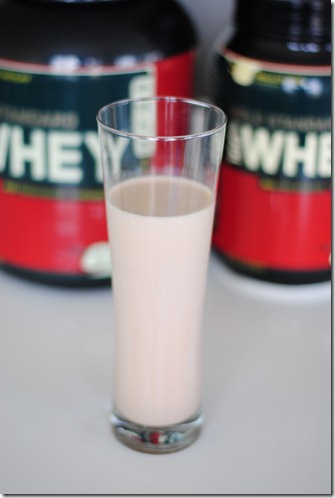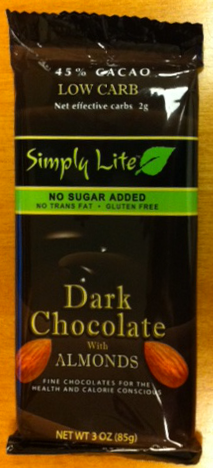Sugar Me Up – Watch My Insulin Response!
Every time I try reading an article explaining the low carb diet and its benefits, I see the words InSuLiN and BlOoD sUgAr being thrown around, and my brain just starts to spin (didn’t I mention that I sucked at biology?). So, here’s my explanation of what these terms are and how they affect our diet and health.
When you consume carbohydrates or sugars (e.g. when you eat a cupcake), the carbohydrates or sugars are digested in your stomach and pass into your blood. This then raises your blood sugar levels. High blood sugar levels can be dangerous as they affect various other body functions, and so your body produces a hormone called insulin to lower your blood sugar level down to a healthy level.
Unfortunately, when you keep eating foods containing a lot of processed carbohydrates, such as pasta, bread, and cakes, your insulin level remains continuously high hour after hour, day after day. This then causes your body to not recognize insulin well (it’s like getting used to all the tourists in New York city, oh wait, it isn’t because it still bothers every New Yorker you ever meet!). Basically, your body gets so overwhelmed by the insulin that’s always around that it stops noticing it. And so your body produces even more insulin to compensate because it has to keep your blood sugar level down still. Type 2 diabetes occurs when your body pretty much stops recognizing insulin, which is why type 2 diabetics have to battle with high blood sugar levels continuously.
How does the low-carb diet help you lose weight then? Well, that’s also linked to your insulin levels (surprise!). Your body can only store fat in fat cells when you have insulin in your blood stream, and you (generally) only have insulin in your blood stream when you eat carbohydrates. So, if you’re eating a bagel for breakfast, a pizza for lunch, and a pasta with a chocolate cookie for dinner, then your body is going to have insulin from dawn til dusk, which is a heck of a long time to keep storing fat in fat cells.
Conclusion: don’t eat carbs if you want to lose weight.
Low Carb/Sugar Free Chocolate
For some reason, today I wanted CARBS! I forgot to bring any snacks to work, and by 3pm, I was starving and all I could think of was mouth-water desserts of all varieties, especially cup-cakes! I took a quick break and went over to the Health Nuts store (64th and 2nd ave, New York) and picked up a low carb chocolate. The chocolate was called Simply Lite – Dark Chocolate with Almonds, which you can also buy from Amazon.com.
The packaging looked great (not just in terms of the design but also in terms of the nutrition). Just under one-third of the chocolate bar had 2g net effective carbs. The serving size is 25g and there’s 3.5 servings in the entire bar. There’s 110 calories per serving with 13g of carbs (2g of dietary fiber and 9g of maltitol).
There are various other “low carb” or “sugar free” chocolates, but they generally all replace real sugar with maltitol or an equivalent.
So of course, I consumed over half of the pack in one fell swoop. It has a very sweet nutty taste, although it was rather lacking in almonds (there were some very small pieces). The chocolate didn’t really melt in my mouth – it was kind of crunchy, and you have to chew on it – but, it did taste like chocolate, and after 3 weeks of no real desserts, it didn’t taste all that bad! The main problem with the chocolate was probably the 9g of maltitol. Maltitol is a sugar alcohol that is used in many low-carb desserts because maltitol doesn’t have to be reported as sugar in the nutritional information. The claims are that maltitol is absorbed more slowly than sugar, and therefore there’s less of an blood glucose spike. The chocolate packaging even recommended it to diabetics! I know this is very unscientific, but I definitely felt a little lethargic after eating such a large piece of the chocolate. I probably had around 4g net carbs (with 18g of maltitol). I definitely don’t think it was the equivalent of consuming 4g of carbs, but I also didn’t feel like I had just consumed over 20g of carbs! Beware, all the “low carb” or “sugar free” chocolates that I’ve seen (and I’ve looked at all the major brands) replace real sugar with maltitol or an equivalent. My verdict: I’m going to try and stay away from maltitol unless I’m super desperate, but it’s more because of the warning on the back of the packet: “Excess consumption may cause a laxative effect”!
Now There Really is Nothing Left to Eat – Learning About Lectins
Today was a depressing day for my diet. First, I went to Dylan’s Candy Bar, which was filled with 3 floors of scrumptious treats that I could not eat! There was literally NOTHING! It was a sad afternoon, which was then made worse when I began reading and thinking about lectins.
Lectins are a type of protein present in many plants (including rice, wheat, rye, other grains, eggplants, and most beans). Although I don’t eat many of these plants, I hadn’t specifically cut lectins out of my diet because I thought I was simply allergic to gluten or else that controlling my insulin would somehow solve all my health issues. (Am I delusional? Well, I’m desperate enough to try almost anything!) But as I read more about lectins, I realize that it sounds way more likely that my allergies and stomach problems are caused by my consumption of lectins.
Lectins are really a toxin that plants developed as a defense mechanism against animals eating them. Before we invented fire, you couldn’t eat grains at all. But even cooking doesn’t get rid of them completely, which is why they can cause a variety of illnesses ranging from arthritis, allergies, and asthma to ADD, obesity, and chronic fatigue. One of the main problems is that lectins cause our intestinal linings to break down, thereby allowing all sorts of unwanted stuff to enter our blood and cells. Our body then creates antibodies to attack those foreign objects, and presto, we are having an allergic reaction! Ok, so my description is rather simplistic, but then my worst subject has always been biology. (I distinctly remember rewriting the question three times as the entire answer to an essay question during my biology exam in college!) Read this article if you want a more scientific description of the dangers of lectins.
I was actually slightly hopeful when I first read about lectins. Well, it sounded so perfect and so easy – I just have to eliminate the foods containing lectin, and I’m cured! But then I read what that entailed…such a diet will require me to stop eating grains of ANY kind (including wheat, wheat germ, quinoa, rice, buckwheat, oats, and corn), dried beans, anything with soy in it, peanuts, dairy, potatoes, tomatoes, eggplants, and peppers. That’s a pretty long list, even though I already forgo almost all grains and potatoes. I mean, my diet is already pretty limited. Not being able to eat all those foods on top of foods with sugar or sweeteners sounded utterly horrific! It would mean cutting out the low carb bread and the low carb chocolate that I had just been super happy to have discovered! Sigh. I’m not sure if I can go lectin free…at least not yet.
Protein Shake Recipes
 You don’t have to be a body-builder to drink protein shakes. They’re great-tasting and nutritious and can make a great breakfast or snack. What I love about them is just how fast and simple they are to make. Breakfast takes less than 5 minutes with these! Click on the links below for more information – there are recipes and more info on protein shakes.
You don’t have to be a body-builder to drink protein shakes. They’re great-tasting and nutritious and can make a great breakfast or snack. What I love about them is just how fast and simple they are to make. Breakfast takes less than 5 minutes with these! Click on the links below for more information – there are recipes and more info on protein shakes.
Recipes:
1. Berrytastic Shake
2. The Low Calorie Thick Shake
3. Black and White Shake
4. Simple Chocolate Shake
More Info:
1. Which protein powder is best?
2. Which “milk” (water, coconut milk, regular milk, or almond milk) should you use?
3. Why drink protein shakes?
4. How to make your shakes thicker?
5. Which blender is best?


